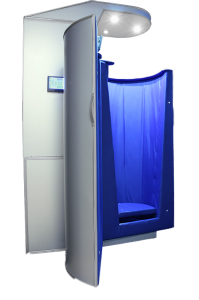Shoulder tendonitis is an injury resulting in inflammation of your rotator cuff and/or biceps tendon. It usually results from your tendon being pinched by surrounding structures. Shoulder tendonitis often leads to rotator cuff tears if left untreated, which can snowball into degenerative calcific tendonitis. Surgery is not always necessary for relief, however, and alternative shoulder therapy techniques can prevent serious mobility issues.
The most common cause of shoulder injury is the result of repeated overuse, or micro-trauma, not from one trauma, as many assume. Rotator cuff injuries are a common source of pain in the shoulder in young athletes, middle-aged people and senior citizens. The severity and frequency of injury leads to progressive worsening and degeneration.
Four separate muscles make up the rotator cuff group in the shoulder. Rotator cuff injuries commonly cause local swelling, tenderness and pain in the front of the shoulder. Pain and stiffness is common when lifting your arm. Over time, overuse and minor rotator cuff injuries can lead to tears or even degenerative changes leading to rupture or tearing of the muscle or tendon.
 Shoulder tendonitis commonly has the following symptoms:
Shoulder tendonitis commonly has the following symptoms:
- Clicking when your arm is about shoulder height
- Shoulder and upper arm pain when lifting something
- Pain when lifting something with a straight arm
- Pain or clicking when your hand is behind your back or head
 In many cases, torn shoulder tendons begin by fraying. As the damage progresses, the weakened tendon can completely tear. This can happen without even lifting a heavy object.
In many cases, torn shoulder tendons begin by fraying. As the damage progresses, the weakened tendon can completely tear. This can happen without even lifting a heavy object.
Types of Rotator Cuff Tears:
- Partial tear: This type of tear is also called an incomplete tear. It damages the tendon, but does not completely sever it.
- Full-thickness tear: This type of tear is also called a complete tear. It separates the tendon from the bone. With a full-thickness tear, surgery is usually required to repair the torn tissue.
Degenerative Calcific Tendonitis
This painful condition occurs when calcium deposits form in the tendons of the rotator cuff. Repetitive injury over time, along with normal wear and tear, causes this condition. Some researchers think that calcium deposits form because there is not enough oxygen to the tendon tissues. Others feel that pressure on the tendons can damage them, causing the calcium deposits to form.
 Injury Prevalence:
Injury Prevalence:
- Higher incidence of this condition in individuals over 50 years old
- Supraspinatus tendon—most common (80% of cases)
- Infraspinatus tendon—15% of cases
- Subscapularis tendon—5%of cases)
Learn more about degenerative calcific tendonitis
5280 Cryo and Recovery Clinics offers a variety of services to manage shoulder tendonitis and related conditions. Treatment protocols are designed to meet your needs whether you are a professional athlete or a stay-at-home mom. Our goal is to accurately diagnose your condition, implement short term in-office therapy, and provide education and support on a management basis that can be performed in your own home, at your own convenience.
Shoulder Therapy Treatment Options
Whole Body Cryotherapy
Gone are the days of ice tanks and cold packs. Whole Body Cryotherapy is the latest and fastest shoulder therapy option to decrease pain, inflammation and improve athletic recovery. Professional athletes are using this treatment at our clinics, and you can too. Whole Body Cryotherapy (WBC) is a cold air session that works by standing inside a cryotherapy chamber for a period of 2-3 minutes.
 Why Cryotherapy?
Why Cryotherapy?
- Provides relief from joint stiffness and loss in range of motion
- Reduces inflammation with tendonitis and overuse injuries
- Aids in relief of joint arthritis
- Assists in decreasing inflammation in bursa and joint capsules
Active Release Technique – Soft Tissue Manual Therapies
Over time, repetitive injuries cause muscles to become tight, leathery, and bound up, increasing the probability to injure again. Repetitive strain injuries are often characterized by pain that comes and goes, with each flare-up a little more painful than the previous. Every A.R.T. session is a treatment to separate the “glued” tissues.
 Over-used muscles change in three important ways:
Over-used muscles change in three important ways:
-
- Acute conditions (pulls, tears, collisions, etc), Injury
- Accumulation of small tears (micro-trauma), Overuse
- Not getting enough oxygen (hypoxia), Chronic
Contact one of our convenient locations to learn more or to schedule an appointment. Our skilled athletic trainers and experienced staff docs will be able assist you with a plan of action, whether you’re suffering from shoulder tendonitis, or you want to make sure you’re doing everything you can to prevent it!
Click here for a half-priced cryotherapy session at 5280 Cryo!


